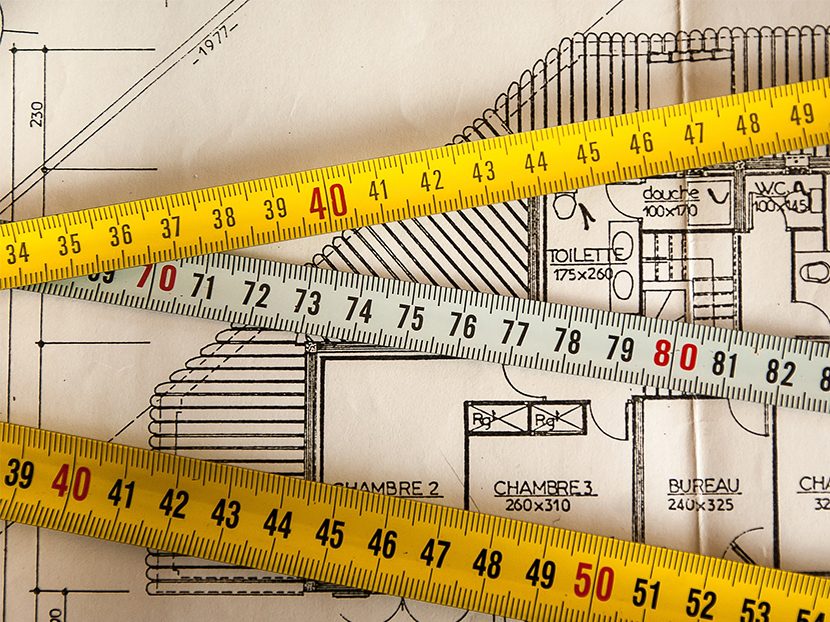Know Who Owns the IOS
Subcontractors would be wise to know the project’s architect.

“What about the architect?” In more than 20 years of practice in construction law, I have never heard a trade subcontractor, plumbing or otherwise, ask that question. However, a recent federal court decision out of the Northern District of Ohio might cause subcontractors to start inquiring about the project’s architect.
The architect’s role
While there are a variety of project delivery systems, the subcontractor’s role on a traditional construction project is pretty straightforward. The subcontractor performs work pursuant to the terms and conditions of the subcontract. The subcontractor asks the contractor for answers that pertain to construction. If the contractor needs information from the architect to answer the question, the contractor submits a Request for Information (RFI). The architect answers the RFI for the contractor, who, in turn, passes the response along to the subcontractor. The subcontractor usually has no interaction with the architect, whose contract requires him/her to deal with owners, construction managers and/or contractors. In fact, the subcontractor probably never even looks at the architect’s contract with the owner. After all, the subcontractor is not a party to the owner-architect contract. Why should the subcontractor even care about such a contract? Because an Ohio federal court said so.
In Eberhard Architects, LLC v. Bogart Architecture, Inc., 314 F.R.D. 567 (N.D. Ohio 2016), the contractors and subcontractors who worked on the construction of a 12-bed hospice facility unwittingly became ensnared in a dispute between the project owner and architect. The result left these construction professionals caught between their contractual obligations to the owner and the copyright protections afforded to the architect.
Non-exclusive license granted by architect
Under its contract with the owner (Lifecare), the architect (Eberhard) granted the owner a nonexclusive license to use the Instruments of Service (IOS) created by Eberhard. The AIA A201-2007 General Conditions defines “Instruments of Service” as “representations, in any medium of expression now known or later developed, of the tangible and intangible creative work performed by the architect and the architect’s consultants under their respective professional services agreements.” This definition appears to cover all of an architect’s work product, including the architectural drawings. The owner-architect agreement between Lifecare and Eberhard further provided that if Lifecare failed to pay Eberhard, the nonexclusive license would terminate.
To protect itself fully under the law, Eberhard obtained a copyright for the IOS that it created for the project. During the course of the project, Lifecare failed to pay Eberhard. Subsequently, Eberhard informed Lifecare that it was in breach of the parties’ agreement and Eberhard terminated the nonexclusive license for the IOS. Eberhard further notified all of the contractors and subcontractors performing work on the project (collectively, the “contractor defendants”) that Eberhard’s nonexclusive license had terminated. Nevertheless, the contractors and subcontractors continued to use Eberhard’s IOS.
Eberhard filed an action against everybody — the owner, the new architect and the contractor defendants — seeking damages for copyright infringement. The contractor defendants moved to dismiss the lawsuit against them. They were not successful.
Termination of agreement equals termination of license
The court began its analysis by explaining that “[a] copyright owner who grants a nonexclusive license to use copyrighted material cannot later sue for copyright infringement, provided the use falls within the scope and duration of the license.” Eberhard, 314 F.R.D. at 572. Here, the contractor defendants claimed that their use of the IOS did not exceed the scope of the nonexclusive license granted by Lifecare because the IOS were only used for this particular project. However, Lifecare argued, that use exceeded the scope of the license because the license was “rightfully terminated.”
Section 7.3 of the owner-architect agreement provided:
Upon execution of this Agreement, the Architect grants to the Owner a nonexclusive license to use the Architect’s Instruments of Service solely and exclusively for purposes of constructing, using, maintaining, altering, and adding to the Project, provided that the Owner substantially performs its obligations, including prompt payment of all sums due, under this Agreement. The Architect shall obtain similar nonexclusive licenses from the Architect’s consultants consistent with this Agreement. The license granted under this section permits the Owner to authorize the Contractor, Subcontractors, Sub-subcontractors, and material and equipment suppliers, as well as the Owner’s consultants and separate contractors, to reproduce applicable portions of the Instruments of Service solely and exclusively for use in performing services or construction for the Project. If the Architect rightfully terminates this Agreement for cause as provided in Section 9.4, the license granted in this Section 7.3 shall terminate.
Under this provision, the nonexclusive license began upon execution of the owner-architect agreement. Thus, the court found that full payment was not a condition precedent to the license itself. Eberhard, 314 F.R.D. at 572.
Payment of fees is condition precedent
However, the court agreed with Lifecare that payment of its fees was a condition precedent to the existence of a license. “[I]f the payment provision constitutes a condition precedent and the condition is not satisfied, an infringement claim may lie. This is because the failure to fulfill a condition precedent results in no license having ever been granted by the licensor, and no authority exists for the licensee’s use of the copyright.” Eberhard, 314 F.R.D. at 572.
Here, Lifecare expressly agreed that the license terminates if Lifecare “rightfully” terminates the owner-architect agreement. Once Lifecare terminated the agreement upon the owner’s nonpayment of its fees, the nonexclusive license for the use of its IOS was terminated as well.
Takeaways
The court denied the contractor defendants’ motion to dismiss, leaving them in the case to defend against Eberhard’s claim of copyright infringement. What could the contractor defendants have done differently here? What lessons could a plumbing subcontractor learn to avoid becoming a party to a copyright infringement action by an architect?
First, the contractor defendants could have, and should have, appreciated the significance of IOS and the architect’s ownership of same. As defined above, IOS covers a broad swath of the architect’s work product, and it is subject to copyright protection.
Second, the contractor defendants could have, and should have, responded to Eberhard’s “cease and desist” letters regarding their use of the IOS. Ignoring cease and desist letters is never a good idea. While it is true that the contractor defendants likely never saw the owner-architect agreement, once they were put on notice of Eberhard’s claim, they could have asked to see it, or Section 7.3 at a minimum.
Perhaps the most significant gaffe by the contractor defendants: they failed to seek legal counsel quickly enough. Instead of seeking counsel for prompt guidance about (a) using the IOS, (b) Eberhard’s prospective copyright claim, (c) the owner-architect agreement, including Section 7.3, and (d) responding to the cease and desist letters, the contractor defendants simply “plowed ahead” with blinders on and continued using the IOS for the project. These failures proved extremely costly to the contractor defendants. Now, they are forced to hire counsel to defend an expensive litigation in federal court. Next time, these contractor defendants will be more responsive and may even preemptively ask, “What about the architect?” before commencing construction in the future.





